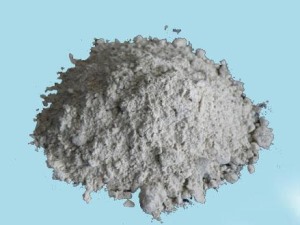Which furnace lining material should be used for the ramming material of the intermediate frequency furnace?
Compared with other amorphous refractory materials of the same material, the intermediate frequency furnace ramming material is in a dry or semi-dry loose shape, and a dense structure is obtained by strong ramming. Only when it is heated to the sintering temperature, the combination has strength.
After the intermediate frequency furnace ramming material is formed, different heating methods can be used to promote its hardening or sintering according to the hardening characteristics of the mixture. If it contains an inorganic chemical binder, it can be demolded and baked after it hardens to an appropriate strength; it contains thermoplastic carbon The binder should be cooled with appropriate strength and then demolded, and it should be quickly heated to coking before use; and the binder that does not harden at room temperature is often sintered with a mold after tamping.
The selection of the binder of the ramming material should be appropriate, some do not need a binder, and some only add a small amount of flux. Acidic ramming materials are commonly used as binders such as sodium silicate, ethyl silicate, silica gel, etc. Among them, dry ramming materials are mostly used. Borates; magnesium chlorides and sulfates are commonly used in alkaline ramming materials; organic compounds with high carbon content and temporary binders that can form carbon bonds at high temperatures are also often used. Among them, dry ramming materials Add an appropriate amount of iron-containing flux. Glauber's salt is commonly used for chromium ramming materials.
At present, what kind of lining material is used in the intermediate frequency furnace for smelting copper? Here is a brief explanation: the lining material used in the intermediate frequency furnace for copper smelting on the market is generally the ramming material of the siliceous intermediate frequency furnace.
Due to the relatively low temperature of copper smelting, most of the siliceous ramming materials are used. In addition to traditional crushing, screening and magnetic separation processes, this ramming material also needs to be dried and washed. The silicon content of the material is generally above 95. 3 iron oxide is less than 0.5.3 aluminum oxide is less than 0.7. The refractoriness is generally 1780 degrees.
The larger particle size is about 5 mm. The dosage per cubic is 2300kg. The bulk density is 2.0. It is suitable for tempering bronze, red copper, cupronickel, and brass. However, the impurities of the siliceous ramming material used should not be too large, nor the silicon content It can be too low, otherwise it is easy to show the phenomenon of bloating. It will reduce the life of the furnace and affect the use.

Related News
- Introduction of construction method of ramming material in intermediate frequency furnace
- How to choose the material of furnace lining
- The difference between rammer and castable
- Application direction of intermediate frequency furnace refining
- Introduction to the construction method of dry ramming material
- Do you know the production process and control points of breathable bricks?
- The application of argon blowing technology at the bottom of the intermediate frequency furnace
- Method for prolonging service life of intermediate frequency furnace lining
- In addition to diffused breathable bricks, there are those types of breathable bricks
- What are the advantages of coil cement
- How to use the furnace lining and how to build the furnace
- Introduction of Insulation of Coil Clay
- Common functions of coil cement of intermediate frequency furnace
- The method of improving the life of ladle breathable brick
- Causes of damage to ventilation bricks
- Selection of lining materials for intermediate frequency furnaces
- Matters needing attention in the knotting process of wear-resistant ramming material
- The composition characteristics of ramming material
- How to improve the temperature resistance of the intermediate frequency furnace lining
- Application and classification of breathable bricks


